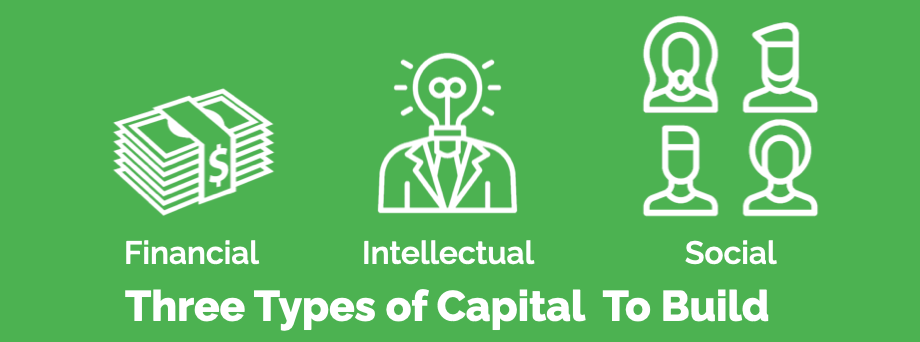Thought Leadership Strategy – The three things every thought leader needs to build to have a successful business.
Thought leaders often run their business as a solo operator. And this can be hard because there is always a never-ending list of things to do. At times, it can be hard to know what to focus on.
Having a clear thought leadership strategy helps.
But having the wrong strategy not only wastes your valuable time, but it also drains your energy because of the lack of results it produces.
In this post, we’ll focus on the three things every thought leader needs to focus on so you can put more time energy and effort into the things that make the biggest difference.
And we’re not just going to talk about it, I’m going to walk you through the exact steps I create Thought Leadership Strategy for myself and my clients.
Plus, I’ll share how to turn your Thought Leadership Strategy into a single hyper focus that has you leaping out of bed in the morning wanting to fulfil it.
Definition of Thought Leadership Strategy
Now let’s look at Thought Leadership Strategy. And we’ll begin by defining our key terms.
A thought leader is someone who earns money from their ideas.

And the strategy is how you are going to achieve your goal. Let me repeat that – strategy is not your goal. Your strategy is how you are going to achieve your goal.
Your Thought Leadership Goal
This means before we start talking about strategy, we need a goal.
What goal is common to all thought leaders?
If you want to earn money from your ideas, then you want to grow your ‘thought leadership business’.
These are the three chunks of our goal: business, thoughts, leadership.
How to build wealth
Now for the big question: What’s the one thing that is common for every single business on the planet?
While there are a few ways to answer this, a useful framework to consider is that of ‘capital’.
Capital is any resource that helps us build wealth.
While there are quite a few different types of capital, there are three that are vital to Thought Leaders.
Remember our goal? The three key words here are: Business, Thoughts and Leadership
And it follows that the three key types of capital are:
- Business = money or financial capital
- Thoughts = ideas or intellectual capital
- Leadership = people or social capital
They’re the three things that every thought leader needs to build. And that’s what makes them the three things that are the foundation of every Thought Leadership Strategy.
Rate Yourself: Your Personal Capital Preference
As with all things – from ice cream to football teams – we all prefer different things.
And the same applies to capital. We all have preferences about which one we think is most important and this will dramatically shape what you focus on and your Thought Leadership Strategy.
To check this for yourself, give a rating on how important each of the three types of capital – money, ideas and people – are for you from zero to five.
The question to ask is: how strongly am I motivated by this?
Score yourself a zero if you have no interest and a five if you are always thinking about this. There is no right answer here, we are all different. Just be truthful to yourself because this will shape your strategy.
For me, I’m a very clear five out of five for ideas. To be honest, I’m probably a 10 out of five I love ideas that much. My score for people is a ‘two’ and for money it is a ‘one’.
And you can check yourself easily here. If I was given the choice of making lots of money working with boring ideas or make less money creating something new and exciting – then I would take creating new things every day of the week.
Which one of these three factors is your driving force?
- Are you a deal maker – money?
- An ideas person?
- Or a connector – people-focused?
This is important information which we’ll use at the end to drive our hyper-focus.
Now we want to look at each one in a little more detail. We want to define some actions and some goals in each of the three areas of capital.
Money or Financial Capital
Usually, when we think about capital we think about money. Financial capital is crucial to grow and sustain a business.
But when most people think about money in business, they instantly and often exclusively think of making more sales. That’s important but there are other goals we can have around money we need to consider also.
For instance, our money goals might include:
- Earn – eg earn more sales
- Spend – eg what could you spend money on to grow your business?
- Save – eg how much can you save in the next 90 days?
- Invest – eg who or what could you invest in to grow your business?
- Give – eg who could you give money to?
- Lend – eg who could you lend money to?
Take a moment and jot down a goal in each of these six areas. Then pick one to focus on for the next 90 days.
Ideas or Intellectual Capital
To grow a business, we need to focus on the money.
But the one thing that separates Thought Leadership from other types of leadership is the use of intellectual capital or ideas.
These are the concepts, tools, framework and know-how that enable us to produce great results. (The strategy in this post is one of my tools and frameworks.)
It follows that we need to spend time to design build and sell our ideas. Without this, we can’t be a thought leader.
Having a goal around ideas might include:
- Research – eg what could learn about?
- Create – eg what product or service could create?
- Design – eg does your website need an upgrade?
- Write – eg what posts could you write and publish?
- Build – eg what systems or processes could you build?
- Capture – eg what live presentations could you capture or record?
Take a moment and jot down a goal in each of these six areas. Then pick one to focus on for the next 90 days.
People or Social Capital
To sustain your business, you need financial capital. To be a thought leader, you also need ideas. But if you don’t have any customers or clients then you wouldn’t be in business in the first place.
The third type of capital we need is people or social capital. This is the value we give and get from the people we know.
Having a goal around people might include:
- Meet – eg who do you want to meet?
- Help – eg who can you help and what will you help them with?
- Congregate – eg could you form a group or community?
- Invite – eg who would you invite to your event?
- Share – eg what ideas will you share online?
- Serve – eg how will you improve your customer service?
Take a moment and jot down a goal in each of these six areas. Then pick one to focus on for the next 90 days.
Also, notice that the usual business approach to boosting sales is to attract new clients. As an alternative, consider how you might support existing clients to grow your business.
Pick Your Three Capital Goals
Now if you’ve completed the exercises, you will have a number of potential goals for each of the three areas of money, ideas and people.
The next step is to pick one for each of these types of capital so that you have three goals in total.
This is the foundation for your Thought Leadership Strategy and your hyper-focus. Keep these handy as we’ll put them to good use very soon.
Summary: Thought Leadership Strategy
Let’s wrap up what we’ve covered here so far.
One thing all businesses need to build is capital.
The three types of capital that thought leaders need to build are:
- Money or financial capital
- Ideas or intellectual capital
- People or social capital
Each of us has a preference for one of these three areas of capital. Some of us are driven by money, some by ideas and others by people.
Having a goal in each of these areas of our business ensures we build a balanced business so we can lead others with our ideas.
How to turn your Thought Leadership strategy into a single Hyper Focus
Now to turn your three goals into your thought leadership strategy and a single hyper-focus to achieve them all.
Instead of having three separate goals, we want to line up these goals in a way that one leads to the other.
Effectively, this means we have only one goal. And by pursuing them in this order, we can create a single strong strategy for how to fulfil all three of them at the same time.
The three steps here are:
- Write down your three goals (one for each of money, ideas and people)
- Arrange your goals in the order of your rating or preference (for me it was ideas then people then money).
- Check to see that achieving the first goal will help you achieve your next goal and then the third goal. You might have to tweak your goals to ensure this happens.
That’s it – done.
Geoff’s Hyper Focus Example
Let me share my example to show you how this works.
My preference is ideas first, people second and money third. Therefore, my strategy therefore needs to lead with an idea goal that builds relationships with people that leads to earning money.
Here are my three goals:
- Ideas: publish a video each week on my YouTube channel
- People: build an online audience
- Money: earn $10K a month from Anywhere Experts.
This becomes my business strategy: create one video each week to attract an online audience to make sales.
The one thing I need to add is the quality of my videos must be good enough to attract enough people to watch them.
As a hyper-focus statement of my Thought Leadership Strategy – Publish one quality video on YouTube each week for 12 months.
And there you have it – a process for creating a single hyper-focus and your Thought Leadership strategy all rolled into one.
More on Thought Leadership Strategy
Here are some resources to further develop your Thought Leadership Strategy:
- Thought Leadership Marketing
- Thought Leadership Content Marketing
- How to be Successful as an Expert in Business
If you have any questions about how to do this, feel free to add a comment below and if you want coaching around this head over to Anywhere Experts.







